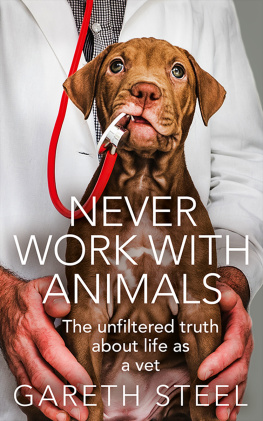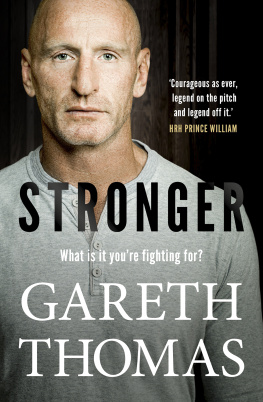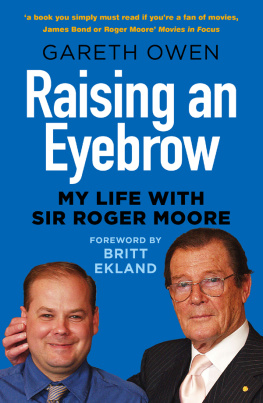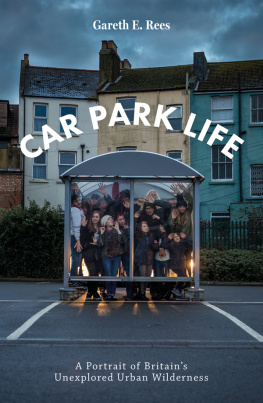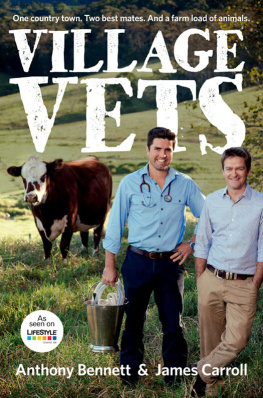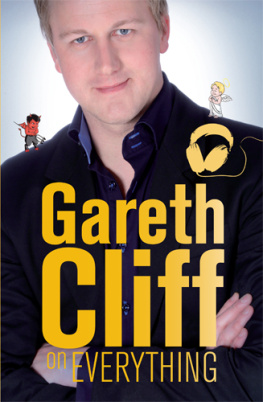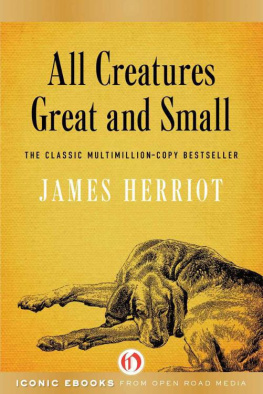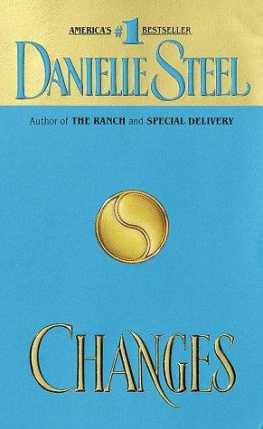This book is dedicated to the unspoken heroes of animal welfare: veterinary nurses
HarperElement
An imprint of HarperCollinsPublishers
1 London Bridge Street
London SE1 9GF
www.harpercollins.co.uk
HarperCollinsPublishers
1st Floor, Watermarque Building, Ringsend Road
Dublin 4, Ireland
First published by HarperElement 2022
FIRST EDITION
Gareth Steel 2022
Cover layout design by Caroline Young HarperCollinsPublishers 2022
Cover photograph Shutterstock.com
A catalogue record of this book is available from the British Library
Gareth Steel asserts the moral right to be identified as the author of this work
All rights reserved under International and Pan-American Copyright Conventions. By payment of the required fees, you have been granted the nonexclusive, non-transferable right to access and read the text of this e-book on screen. No part of this text may be reproduced, transmitted, downloaded, decompiled, reverse engineered, or stored in or introduced into any information storage retrieval system, in any form or by any means, whether electronic or mechanical, now known or hereinafter invented, without the express written permission of HarperCollins e-books.
Find out about HarperCollins and the environment at
www.harpercollins.co.uk/green
Source ISBN: 9780008466589
Ebook Edition February 2022 ISBN: 9780008466596
Version: 2022-01-04
This ebook contains the following accessibility features which, if supported by your device, can be accessed via your ereader/accessibility settings:
- Change of font size and line height
- Change of background and font colours
- Change of font
- Change justification
- Text to speech
- Page numbers taken from the following print edition: ISBN 9780008466589
First of all, a warning. Ive been a qualified vet for almost twenty years. Ive enjoyed it enormously. I have also been challenged and humbled by my profession. Ive found vets are much misunderstood by the general public and Im seeking to redress the balance here. Ive tried to be as candid as possible throughout and there is much to criticise. You may be surprised by bits of this book, and it isnt suitable for the younger reader. The overarching concept throughout is to inform and provoke thought. Unfortunately, that means grappling with some difficult, uncomfortable and even distressing issues. There are some high highs in this book, and some low lows; they reflect the reality of what it is like for the vets, nurses and support staff who care for our animals.
Second, an explanation. This book is a product of communication, or at least, the lack of it. TV abounds with veterinary series and documentaries searching for the extreme, the entertaining and the further boundaries of veterinary medicine. We are also blessed with the excellent and entertaining All Creatures Great and Small: a book, subsequently adapted into television series that have inspired many a veterinary career. There are shark documentaries, series about wildlife veterinarians and even a programme called Penguin A&E. Im not sure what a penguin accident and emergency department would look like, but it seems an unsound proposition for a small business. However, rarely, in any of these, is someone presented with a bill. What is lacking in many of them, in my opinion, is realism. Thats not to denigrate these shows; they often have admirable goals. However, the primary goal is to entertain within the limitations of television. It is extremely hard to accurately convey someones thoughts or feelings via TV. Especially so when they are complex or nuanced.
It was recently noted in the veterinary press that almost no other profession has a higher chance of people entering it with a romanticised concept of their future employment. This book seeks to fill the information void. At the same time, I want to drag you around a rollercoaster of adventure, mistakes and successes, and hopefully have a little fun en route.
This book is for anyone, but especially the aspiring vet, the pet owner who wants to know what their vet is really thinking, anyone with an interest in science, and my fellow professionals for whom Im trying to speak, however imperfectly. If anyone thinks they recognise themselves, or their practice, theyre mistaken. Its not me, its not you, I was never there and please dont phone to check.
Third, a caveat. Had there been a vote in vet school for Person Least Likely to Write a Book on Veterinary Medicine, I like to think I would have won outright. Im not the best vet in the world, Im very often not even the best vet in the room. Im not a specialist, though I have worked in emergency-specific clinics. Ive worked all over the UK, in many different practices and with most domesticated species. Ive worked with some creatures who have fallen some way short of household-pet suitability. This is not a work of clinical excellence, nor a reference text. Ive left in medical mistakes that Ive made and older treatment protocols that have become outdated. Ive deliberately avoided referencing scientific papers or articles. Veterinary medicine and science in general is constantly evolving, and what is correct at the time may not be in the future. My opinion will change with the evidence. For the curious I recommend you do your own research.
I dont want to gloss over our profession. Rather, I want the public to have as honest an account as possible. Vets already enjoy enviable levels of public trust. I suspect this will only be increased when the challenges involved are unveiled.
With that in mind Ive taken steps to anonymise everyone, human or otherwise, with the exception of myself. Locations are deliberately approximate, clinic names omitted, and patient confidentiality respected. For owners, keepers, riders, farmers and the interested, I want to give you a glimpse into the lives and minds of your veterinary advisors. Maybe itll increase your empathy for them, maybe itll make you change to another vet. If what you do involves some thought, Im glad I could help.
If the Royal College of Veterinary Surgeons feel that any particular passage warrants my being struck off, know that I am prone to exaggeration and am a notorious liar, so that bit is probably not true. But it happened.
Dont be so sure.
Always consider the possibility that you are wrong.
What assumptions have you made?
What does the data not tell you?
Do not mistake the absence of evidence for evidence of absence.
After five years of university, I had proven myself to be a fairly mediocre vet student. I only had myself to blame, but, despite this, Id just managed to land my first job at a six-person mixed practice in Northern Ireland. My family had generously donated their ageing estate car to me in which to make my way around the beautiful countryside. Armed with the enthusiasm and knowledge of a fresh-faced graduate, I was determined to save myself and my patients from catastrophe. Like many students starting their first job, I was full of both confidence and doubt in my own abilities. The exact ratio of one to the other changed on a minute-to-minute basis. And so it was that I found myself on a farm in a corner of the UK with the mission of shooting a bull. Not, you might think, a natural mission for one tasked with saving fluffy things and bunnies. However, there are darker regions of veterinary medicine that not even Batman would willingly enter into. My boss was an unashamedly no nonsense kind of guy and mentoring was not a word that tripped off his tongue. In his defence, I was pretty poor at asking for assistance and we were so busy there was little time for teaching or training.

